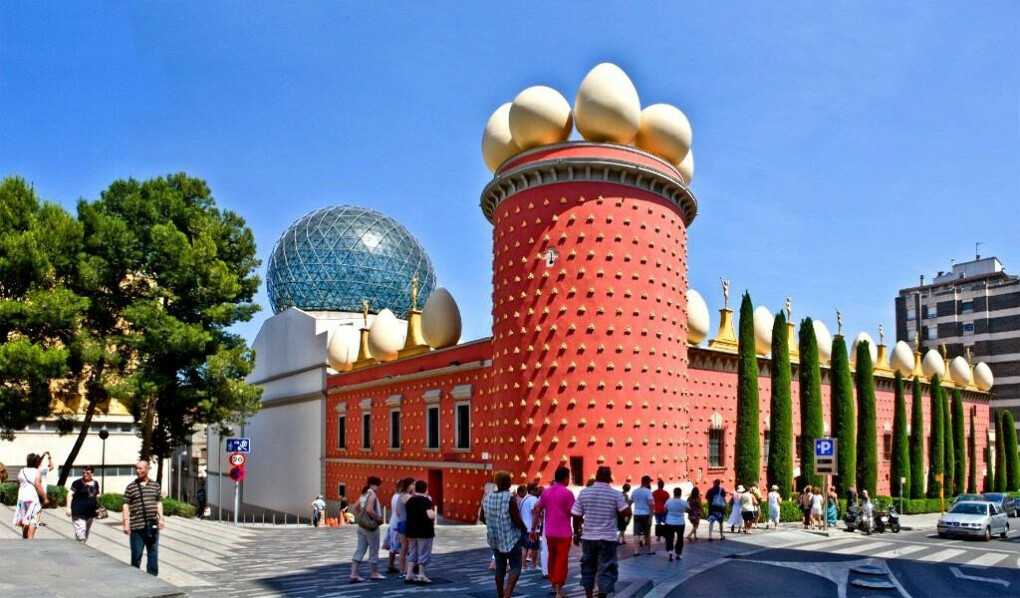Spain, 1936-38 by Salvador Dali
| Courtesy of www.DaliPaintings.com |
In 1936, Spain was being torn apart by civil war. Dali and Gala had to do without their retreat to Port Lligat. Instead, they traveled around Europe, and spent some time living in Italy. When they stayed in Florence
and Rome, Dali spent some time studying Raphael, Leonardo Da Vinci, and Michelangelo. The influence of the Renaissance masters is clearly apparent in the groups of figures he
subsequently used in his paintings in orders to establish multiple images, as in Spain, or The Invention of the Monsters.
The figure of the woman leaning her elbow on a nightstand symbolize the Spanish Civil War. The torso and the face of the female figure are made up of groups of Renaissance warriors, of condottieri,
inspired by combat of horsemen done by Leonardo da Vinci. Dali exhibited this painting
together with others in a one-man show that he, aided by Gala, organized in February 1939 in the studio where the couple was living on the rue de la Tobe-Issoire in Paris. Friends and society people came to see this
exhibition of paranoiac-critical activity, and Dali remembers that the first to arrive and the last to leave was Pablo Picasso, who asked especially to see Spain
Dali wrote in his Secret Life
Throughout all martyrized Spain rose an odor of incense, of the burning flesh of priests, of spiritual quartered flesh, mixed with the powerful scent of the sweat of mobs fornicating among themselves and with Death.”
-
The Persistence of Memory
-
Swans Reflecting Elephants
-
The Temptation of Saint Anthony
-
The Disintegration of the Persistence of Memory
-
Christ of Saint John of the Cross
-
The Burning Giraffe
-
Crucifixion
-
Archeological Reminiscence of Millet’s “Angelus”
-
Landscape with Butterflies
-
Melting Watch
-
Elephants
-
The Madonna of Port Lligat
-
Bacchanale
-
Tuna Fishing
-
The Sacrament of the Last Supper
-
Lobster Telephone
-
The Anthropomorphic Cabinet
-
Geopoliticus Child Watching the Birth of the New Man
-
Metamorphosis of Narcissus
-
Gala Contemplating the Mediterranean Sea
-
Raphaelesque Head Exploding
-
Galatea of the Spheres
-
Spider of the Evening
-
Soft Self-Portrait with Fried Bacon
-
Spain
-
Sleep
Surrealist works by Dalí in Spanish museums in Spain is Culture
Spain is privileged to be a birthplace of great artists who have left their work spread around the country.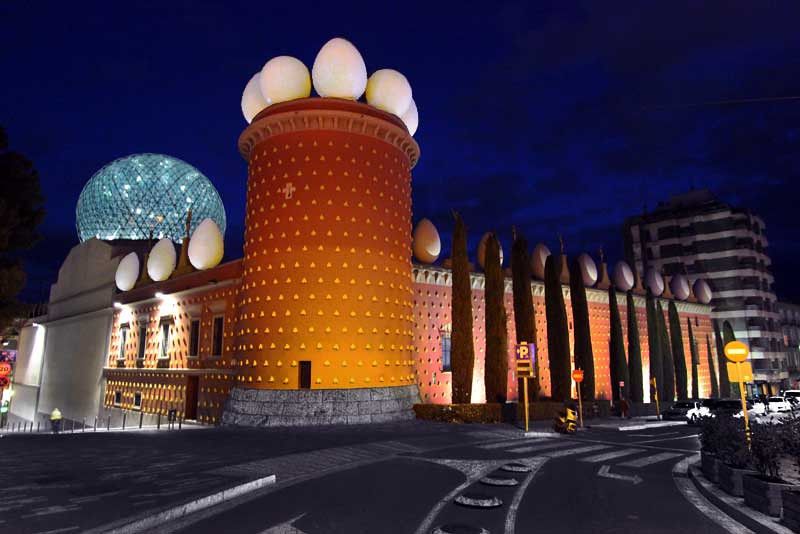
Journey to the town where Dalí was born and died. Or appreciate the seascapes that inspired so many of his works and admire the imaginative abundance used in decorating residences and workshops, today converted into museums showing his complete creative genius:
Dalí on the Costa Brava
Three Dalí museums, completely removed from conventional museum spaces, await surrealism lovers on the Spanish Costa Brava. A visit there is highly stimulating for immersing oneself in the artist’s dream world, since it is not a series of isolated works but rather large artistic complexes. Architectural spaces and surrealist stages that won’t fail to move you.
Figueres, a town in Gerona where Dalí was born and died will bewitch you.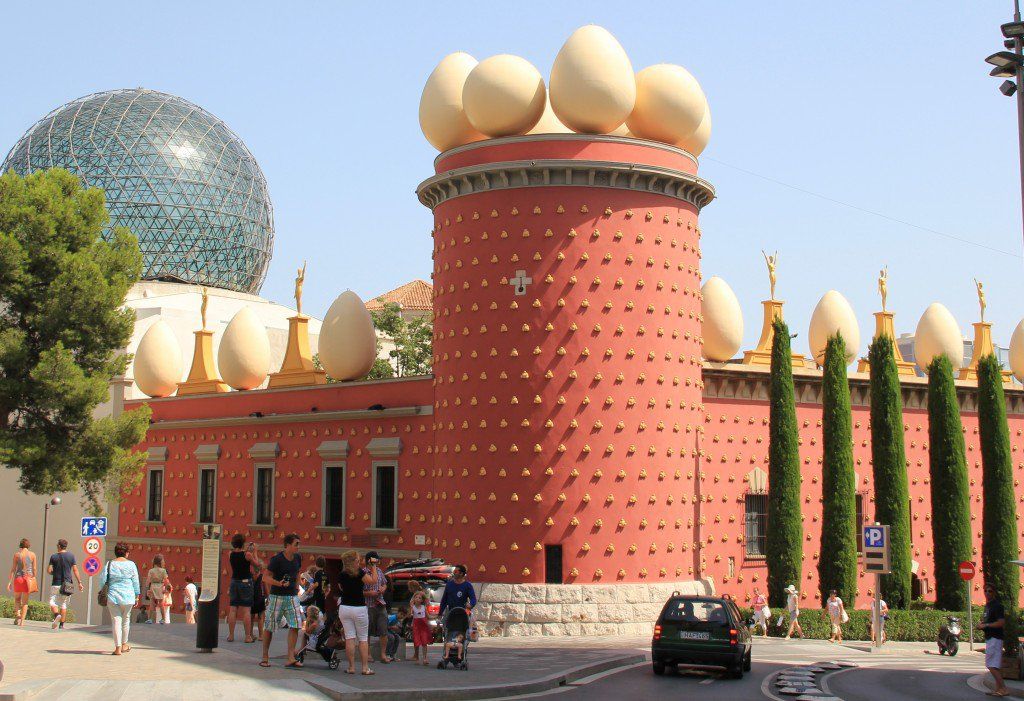
To uncover the more private side to the painter’s life and his muse, we invite you to tour the Home Museum Gala Dalí Castle. Exclusivity is the prevailing touch in this mediaeval castle in Púbol, where the paintings and drawings Dalí gave to Gala can be seen. A mysterious atmosphere surrounds the rooms designed and decorated by Dalí. Be captivated by the sculptures of elephants in the garden, the swimming pool surrounded by busts of Wagner or Gala’s party dresses designed by one of the great geniuses of all time.
Without leaving Catalonia
Equally attractive is a visit to what was Gala and Dalí’s refuge for years.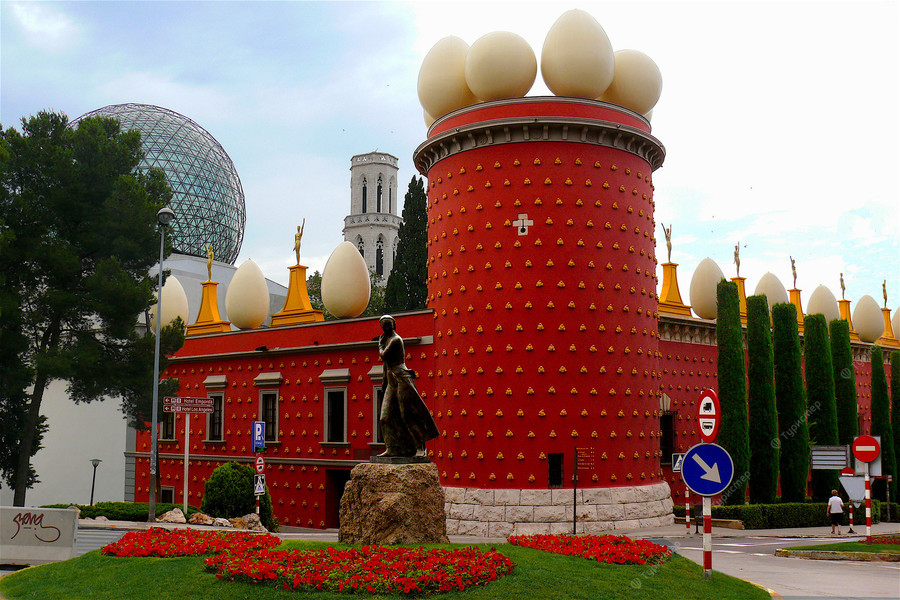
The rich Dalí heritage continues in Catalonia at major centres and museums. The Perrot-Moore Art Centre in Cadaqués, the Monserrat Museum or the Maresme Regional Museum are just a few locations.
The Spain of Dalí, the Dalí of Spain
Salvador Dalí’s talented contribution to art and universal culture can be clearly seen in many other collections at Spanish museums. Pieces that will urge you to head out on this cultural tour and discover the artist’s different creative stages. Prestigious museums in Madrid such as the Reina Sofía National Art Centre or the Thyssen-Bornemisza Museum integrated into the famous “Art Route” house key works in Daliesque iconography.
In this way, Spain is the ideal place to discover and look deeper into the figure of this Surrealism genius, perhaps one of the most universal Catalans in the history of Spanish art. Dalí awaits you in Spain.
Top 5 places in the footsteps of Salvador Dali in Spain
Barcelona travel articles
Viatores
Are there many people whose life is truly interesting to observe? The king of surrealism and the genius of his time, Salvador Dali, is definitely one of them. Going on a trip to Spain, do not deny yourself the pleasure of lifting the veil of secrecy and learning a little more about the most extravagant artist of the 20th century.
-
Teatre-Museu Dalí de Figueres
Where, if not in the city of his childhood, will the great surrealist fulfill his dreams of creating his own theater museum? Even the Spaniards themselves would hardly have known about the small town of Figueres in the province of Girona, if Salvador Dali himself had not been born there a little more than a century ago. Now this inconspicuous town is known all over the world. Of particular interest is the history of the building that houses the Dali Theatre-Museum. Read more…
-
Reial Cercle Artístic de Barcelona (Reial Cercle Artístic de Barcelona)
Dali’s life is inextricably linked with his homeland, where he spent most of his life.
Therefore, of course, the capital of Catalonia has hosted him more than once. To get acquainted with the works of Salvador Dali in Barcelona, head to the Royal Art Circle, which is located in the heart of the city – in the Gothic Quarter. Read more…
-
House of Salvador Dalí in Portlligat
A 35-minute drive from Dali’s hometown of Figueres, on the Mediterranean coast, is the small village of Cadaqués, where Salvador’s parents had a summer home. The Dali family often came here on vacation, which is remarkable and surprising at the same time – before, such a road took a whole day to travel. Young Salvador spent hours wandering along the beach, absorbing the sea air, memorizing the bizarre shapes of the rocks and enjoying unforgettable views. Read more…
-
Cap de Creus
The easternmost point of the Iberian Peninsula and, according to the locals, “Land’s End” – all this is about Cape Creus. For Dali, this was a special place – he drew his inspiration from the local landscape and it was here that he brought his future wife Gala on their first date.
Read more…
-
Pubol Castle (Castell Gala Dalí – Púbol)
Pubol Castle
Another ancient building, saved from destruction by Salvador Dali. In 1969, a loving husband gives his beloved Gala what he has long promised: a castle in the village of Pubol, which was built in the 11th century. By that time, the castle was in a state of disrepair, and the Dali couple breathed new life into it. Many call it none other than Gala Castle, and there is an explanation for this: it really was a fortress and a refuge for Dali’s wife, while Salvador himself continued to throw crazy parties on his estate in Port Lligat. And he could come to Pubol only at the invitation of the hostess! Read more…
Page cover photo: Beatriz Mendes
AttractionsArt of SpainPlaces
All about travels in Russia and abroad
“Spain” (1938) – painting by Salvador Dali
The World of Salvador Dali
·
October 02, 2020
The painting “Spain” was painted by Salvador Dali in 1938, far from the Spanish Civil War engulfed and beloved by the artist , his native Port Lligat.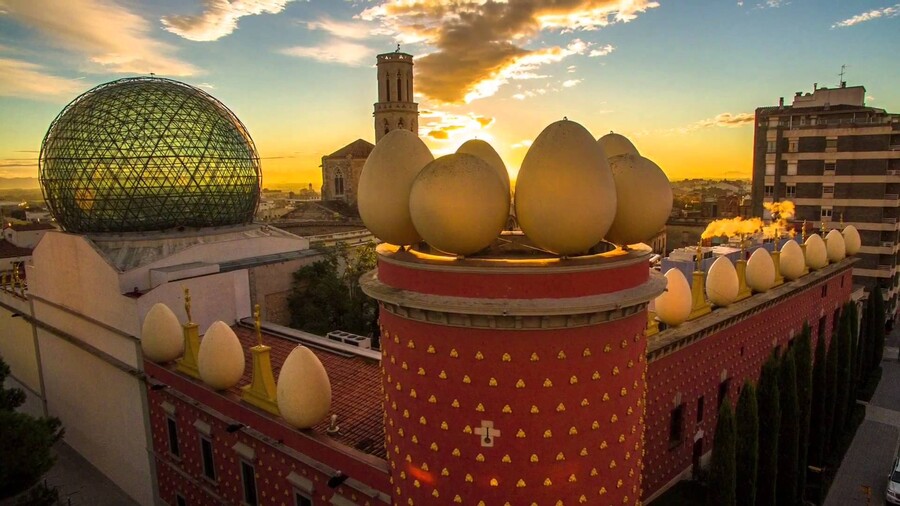
no participation in hostilities, he spent all three years of the bloody Spanish events outside the country – however, this did not mean at all that what was happening in his homeland did not at all
worried.
The painting “Spain” is one of many attempts to comprehend this terrible, “biological”, as Dali called it, phenomenon – war. Note that Salvador Dali, as we have already written more than once,
persistently emphasized his apathy and declared that the war, in fact, is not a clash of political forces at all – but only the release of ancient bestial instincts, from which
Humanity has never got rid of it, for such is its deepest essence.
In the “secrets of the subconscious” of each of us, no matter how we dress up in decent clothes of civilization and high morality, there always lives a cruel beast hungry for blood. It is no coincidence that there are already
the boxes of Salvador Dali, famous by that time, are the very “hidden secrets of the subconscious” that appeared thanks to the fanatical passion of the Spanish artist for Freud and quickly became one of
favorite images of Dali.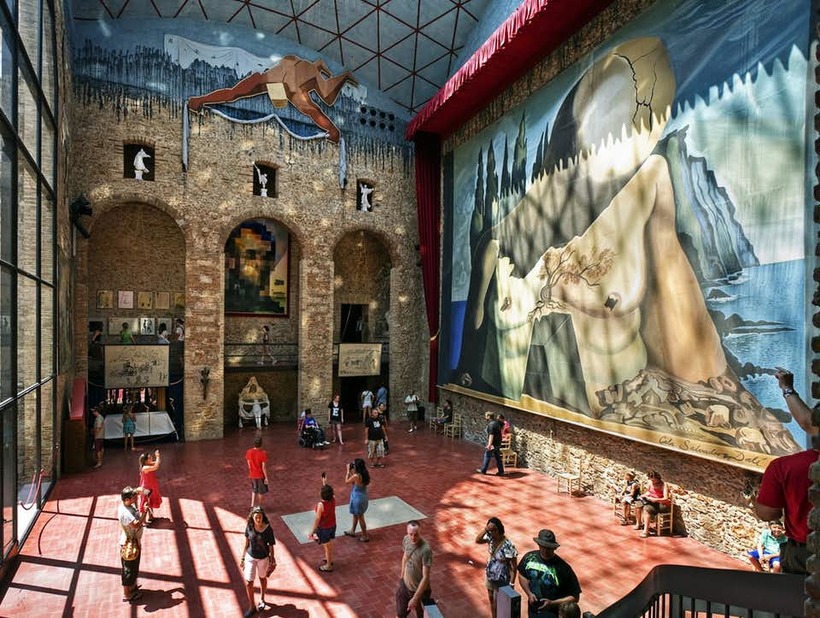
And what is there, in the “hidden recesses of the subconscious” in Spain, engulfed in a fratricidal war? Violence and bloodlust. This is the only and most important thing during the war years: bestial cruelty, thirst for blood and
endless desire to destroy their own kind.
The box, as we see, is ajar, and a piece of bloodied flesh sticks out of it. The same is evidenced by the image of a bloodthirsty predator, a lion, not accidentally introduced by Salvador Dali into the plot.
The fact that cruelty and bloodlust are at the forefront is also evidenced by the rich bloody color of a piece of meat – immediately standing out on a deliberately monotonous, earthy palette
paintings.
The painting “Spain” gives us the opportunity, among other things, to enjoy one of the most interesting, creatively conceived and masterfully executed “double images” of Salvador Dali. Looking closely at how
follows, we will see that the face and torso of the allegorical “Spain” are at the same time a battle scene.

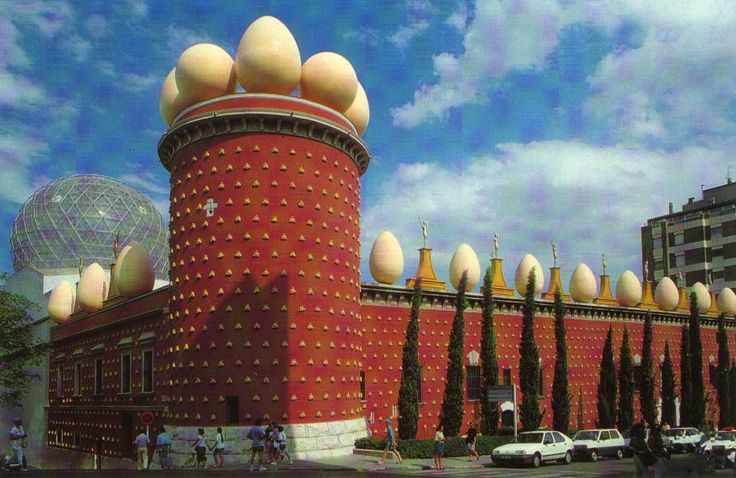 Therefore, of course, the capital of Catalonia has hosted him more than once. To get acquainted with the works of Salvador Dali in Barcelona, head to the Royal Art Circle, which is located in the heart of the city – in the Gothic Quarter. Read more…
Therefore, of course, the capital of Catalonia has hosted him more than once. To get acquainted with the works of Salvador Dali in Barcelona, head to the Royal Art Circle, which is located in the heart of the city – in the Gothic Quarter. Read more… 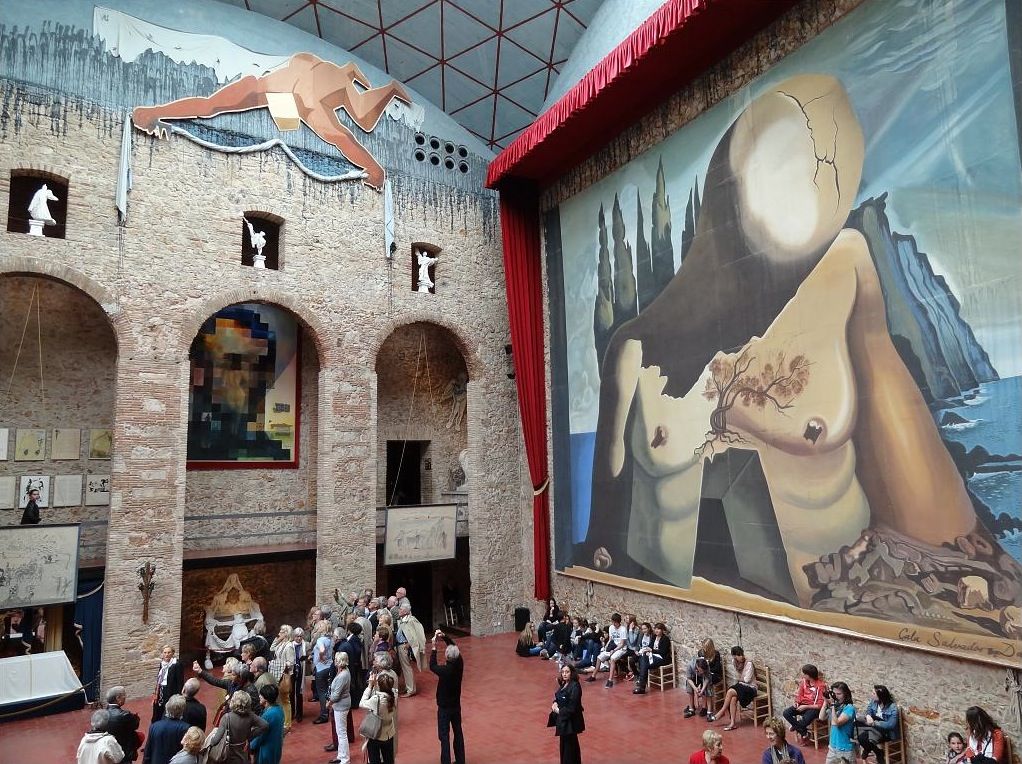 Read more…
Read more… 